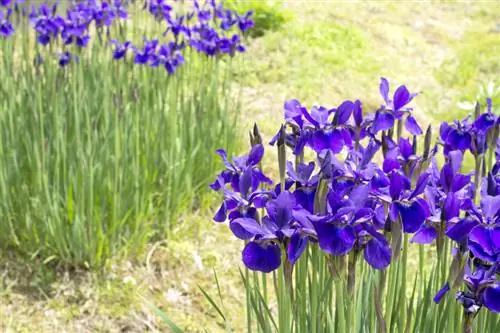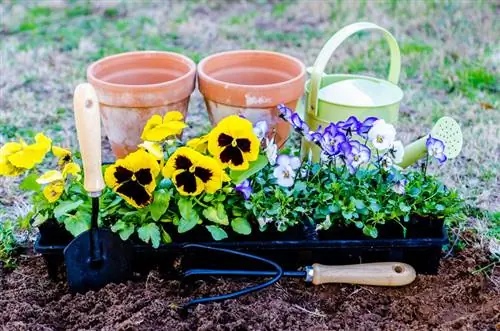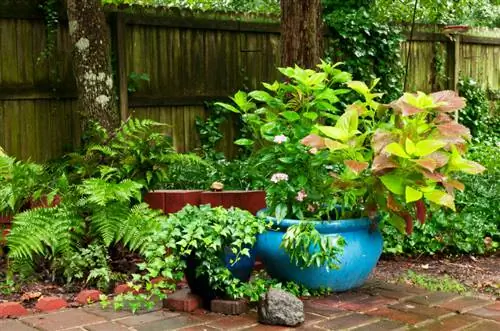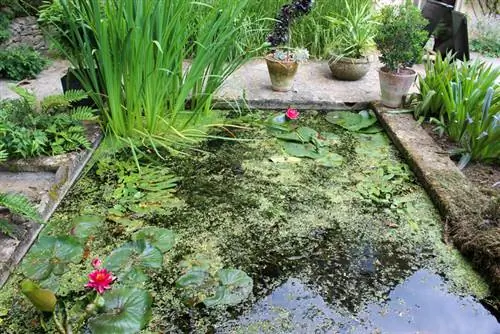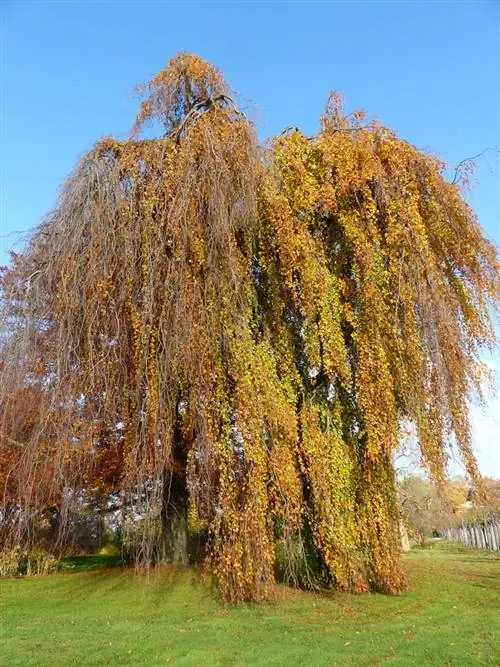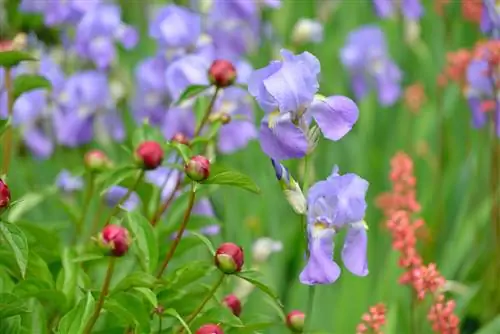- Author admin [email protected].
- Public 2023-12-16 16:46.
- Last modified 2025-01-23 11:20.
Irises are grateful flowering plants in the garden, as they hardly need any special care and attention once the location has been chosen correctly. You should only dig up, divide and transplant the rhizomes every few years, otherwise the plants can become lazy due to a lack of nutrients.
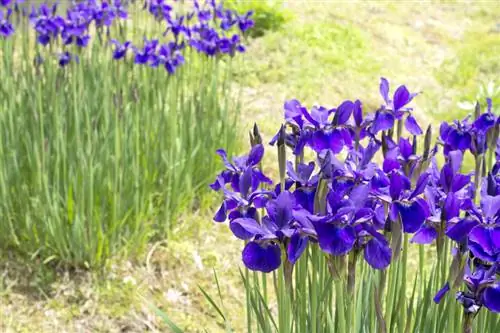
Which location is best for irises?
The ideal location for irises varies depending on the species: bearded irises thrive in flexible locations, swamp irises prefer permanently moist areas, while steppe irises require dry and permeable soil. In general, all irises prefer a sunny location.
Basic site conditions for irises
Overall, irises are relatively undemanding plants that can grow even in very poor soil without special fertilization. Irises generally thrive particularly well in full sun. Within the iris family a distinction is made between:
- Swamp Irises
- Steppe Irises
- Beard Iris
Positioning different types of irises correctly
The bearded iris (Iris barbata hybrids) with their eye-catching flowers can be planted relatively flexibly in most locations in the garden. You can either grow the necessary young plants yourself from seeds or propagate them by dividing the rhizome. While swamp irises such as the species Iris pseudacorus can also grow well in permanently moist locations, the soil for steppe irises such as the Iris variegata should be as dry as possible.
Tips & Tricks
Iris species with a preference for dry soils should be planted in soil that is as well-drained as possible. If the soil is heavy, you can use a drainage layer of compost (€41.00 on Amazon) or coarse sand to prevent waterlogging.

